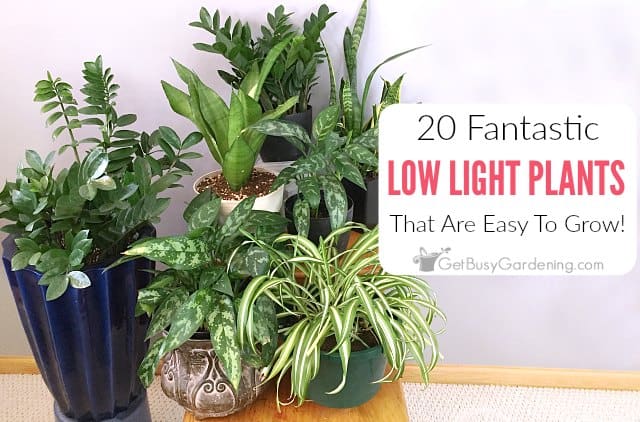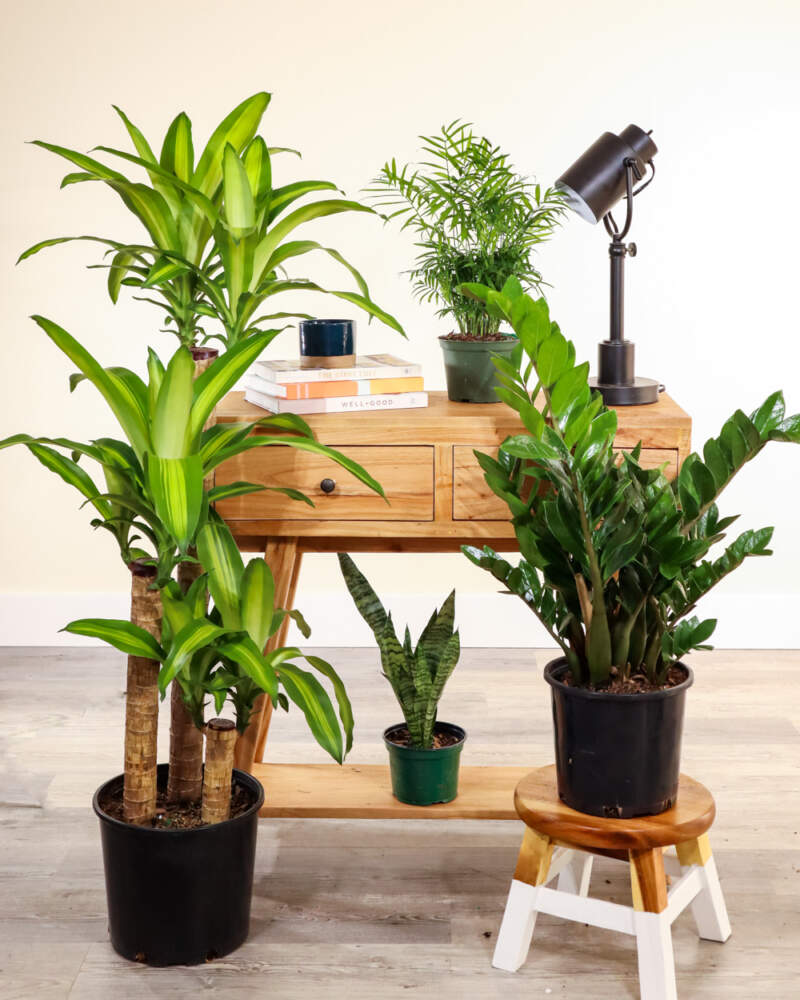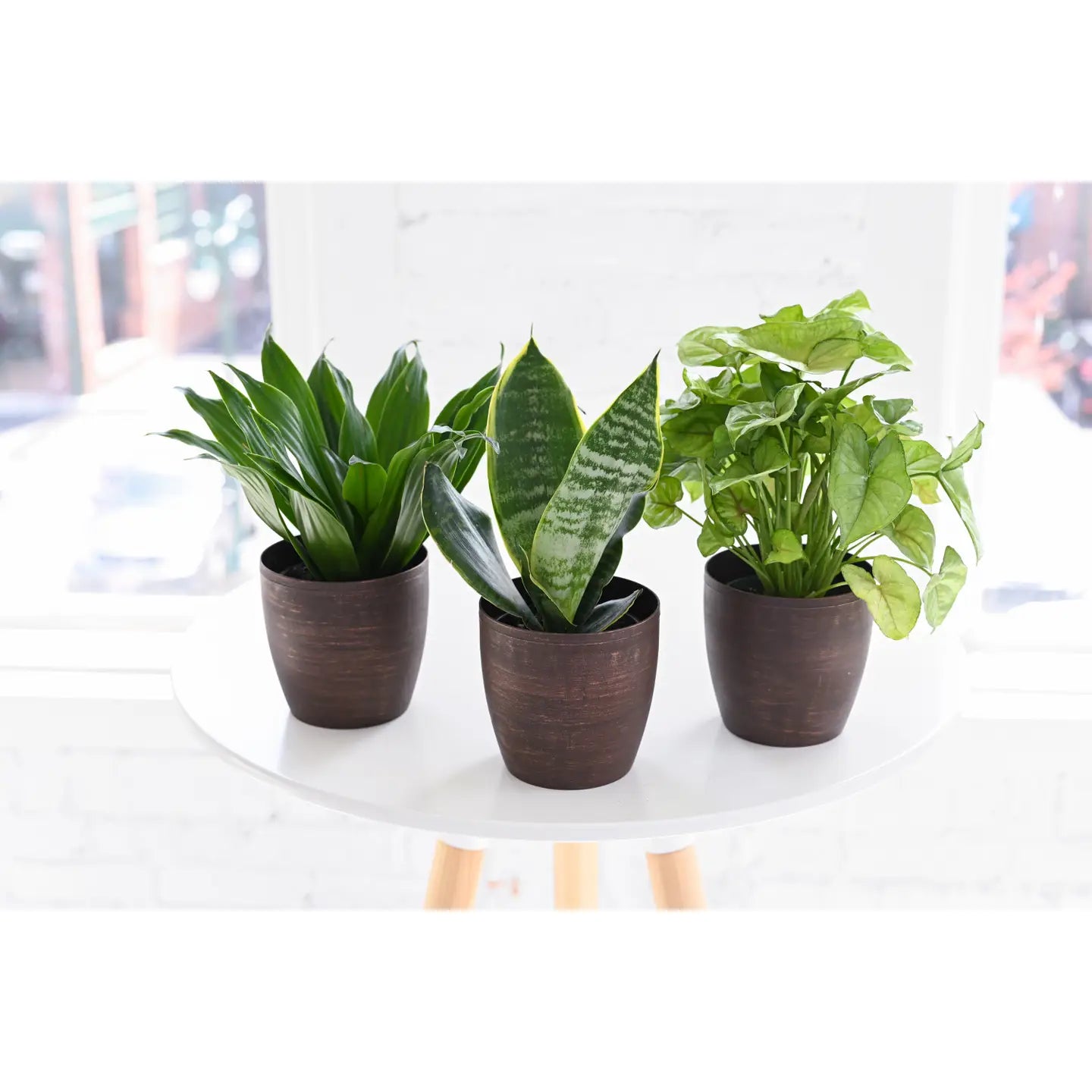Best Low-Light Indoor Plants for Those with Limited Natural Light in Their Homes
Best Low-Light Indoor Plants for Those with Limited Natural Light in Their Homes
Blog Article
Transform Your Home With Beautiful Low-Light Indoor Plants and Their Advantages
Including low-light interior plants right into your home can considerably enhance both the aesthetic and ecological quality of your space. These plants, which flourish in dim conditions, serve not only as decorative components yet also as natural air purifiers, making them perfect for urban dwellers or those with minimal sunlight exposure. As we explore the different sorts of low-light plants and their benefits, you may locate surprising ways to incorporate them right into your home that can transform your surroundings in methods you may not have actually prepared for.
Benefits of Low-Light Plants
Low-light plants supply countless advantages for indoor settings, making them a superb choice for both novice and skilled garden enthusiasts. Among the main benefits is their adaptability to low-light problems, enabling people to improve their home without the need for comprehensive sunshine exposure. This particular makes them suitable for apartment or condos, offices, and various other areas with minimal natural light.

Moreover, incorporating low-light plants into home décor can elevate the aesthetic charm of an area. Their lavish vegetation and differed textures create a soothing atmosphere, contributing to general wellness. The visibility of plant has been connected to minimized anxiety levels and enhanced productivity, making low-light plants a useful choice for enhancing both physical and psychological health and wellness in interior settings.
Leading Low-Light Indoor Plants
While numerous indoor plants thrive in bright light, a number of types are particularly fit for low-light problems, making them optimal for numerous indoor spaces. One prominent selection is the Snake Plant (Sansevieria), understood for its striking upright fallen leaves and resilience, calling for minimal care. An additional excellent choice is the Pothos (Epipremnum aureum), which includes heart-shaped leaves and can track beautifully from wall mounts or racks, thriving in reduced light and including a lavish touch.
The ZZ Plant (Zamioculcas zamiifolia) is celebrated for its glossy leaves and ability to hold up against neglect, making it ideal for hectic way of livings. Similarly, the Peace Lily (Spathiphyllum) not only tolerates low light however likewise creates magnificent white blossoms, boosting any room's aesthetic.
For an one-of-a-kind touch, take into consideration the Cast Iron Plant (Aspidistra elatior), which without a doubt meets its name, growing in the darkest edges of your home. Lastly, the Chinese Evergreen (Aglaonema) uses a variety of leaf patterns and shades while being incredibly flexible in low-light problems. These plants not only improve indoor atmospheres yet likewise contribute to air filtration, improving your space.
Treatment Tips for Low-Light Plants

Watering methods are important; these plants often like slightly dry problems. Overwatering can cause root rot, so make sure that the leading inch of soil is dry prior to watering once more. Use pots with drain openings to permit excess dampness to get away.
Moisture is another crucial variable. Several low-light plants, such as ferns and tranquility lilies, gain from higher humidity degrees. To raise humidity, consider misting the leaves or putting a tray of water near the plants.
Fertilizing should be approached with care. Throughout the growing season, utilize a diluted, balanced liquid fertilizer on a monthly basis to support development, yet stay clear of fertilizing during the dormant winter season months.

Innovative Ways to Show Plants
Interior plants can act as fascinating focal factors in any kind of room, enhancing both aesthetic appeal and ambiance. Creative screens can raise the visual effect of low-light plants, making them an important component of your home decoration. One efficient technique is to utilize tiered plant stands, which permit you to display several plants at this page varying heights while optimizing floor room.
Hanging planters are an additional cutting-edge alternative, producing a sense of depth and attracting the eye upwards. Consider macramé hangers or wall-mounted shelves to present an one-of-a-kind appearance and style.
For a more organized technique, usage geometric terrariums or glass containers to house your plants, adding a modern touch to your interior garden. You can also repurpose classic products, such as teacups or wooden cages, for a diverse screen that shows your personality.
Enhancing Home Setting With Plants
Integrating low-light plants into your home not just improves visual allure however also adds considerably to the overall setting. These plants function as natural decoration elements, presenting a sense of peace that can transform any type of area. The visibility of plant fosters a relaxing atmosphere, which is particularly useful in high-stress settings such as home workplaces or living rooms.
Low-light plants, such as snake plants, pothos, and ZZ plants, are not just aesthetically Web Site pleasing however also enhance interior air quality by filtering system pollutants. This double feature improves the setting additionally, developing a healthier living room (Best low-light indoor plants). The tactical positioning of these plants can also affect the perception of area; for example, high plants can draw the eye up, making ceilings show up higher and spaces extra spacious
Additionally, differing textures and colors of foliage add depth to indoor layout, permitting innovative expression in home designing. Whether positioned on racks, in edges, or as focal points, low-light plants can boost the mood of any space. In summary, integrating these plants right into your home is a reliable means to cultivate a cozy, welcoming atmosphere while profiting of improved air quality and aesthetic flexibility.
Conclusion
Including low-light indoor plants into home settings uses various advantages, consisting of improved visual charm and improved air top quality. These durable plants, such as the Snake Plant and Tranquility Lily, need minimal light and upkeep, making them appropriate for find here diverse way of livings.
While numerous interior plants prosper in bright light, a number of varieties are especially fit for low-light problems, making them perfect for different indoor rooms. One efficient technique is to utilize tiered plant stands, which permit you to showcase several plants at differing heights while taking full advantage of flooring room.
Low-light plants, such as snake plants, pothos, and ZZ plants, are not only visually pleasing yet additionally improve interior air high quality by filtering system pollutants. Best low-light indoor plants. The critical placement of these plants can likewise affect the perception of room; for instance, high plants can attract the eye upward, making ceilings appear greater and areas much more large
These durable plants, such as the Serpent Plant and Tranquility Lily, need very little light and upkeep, making them ideal for diverse way of lives.
Report this page